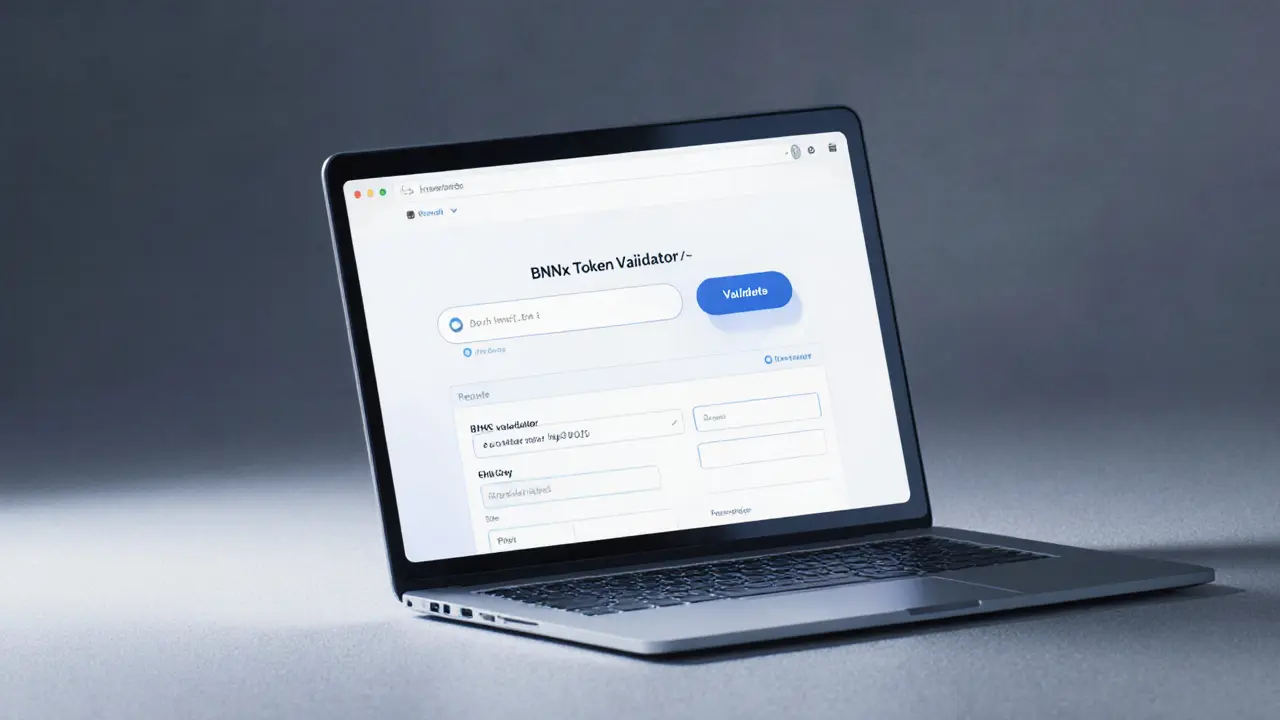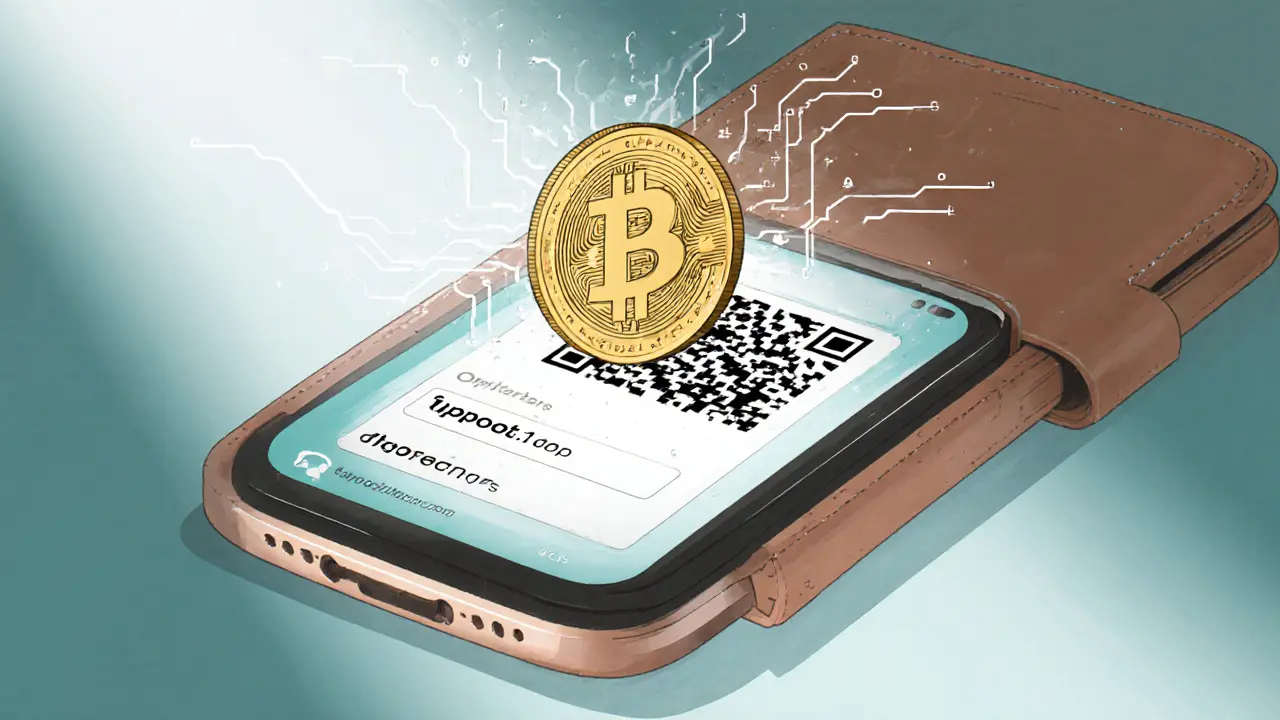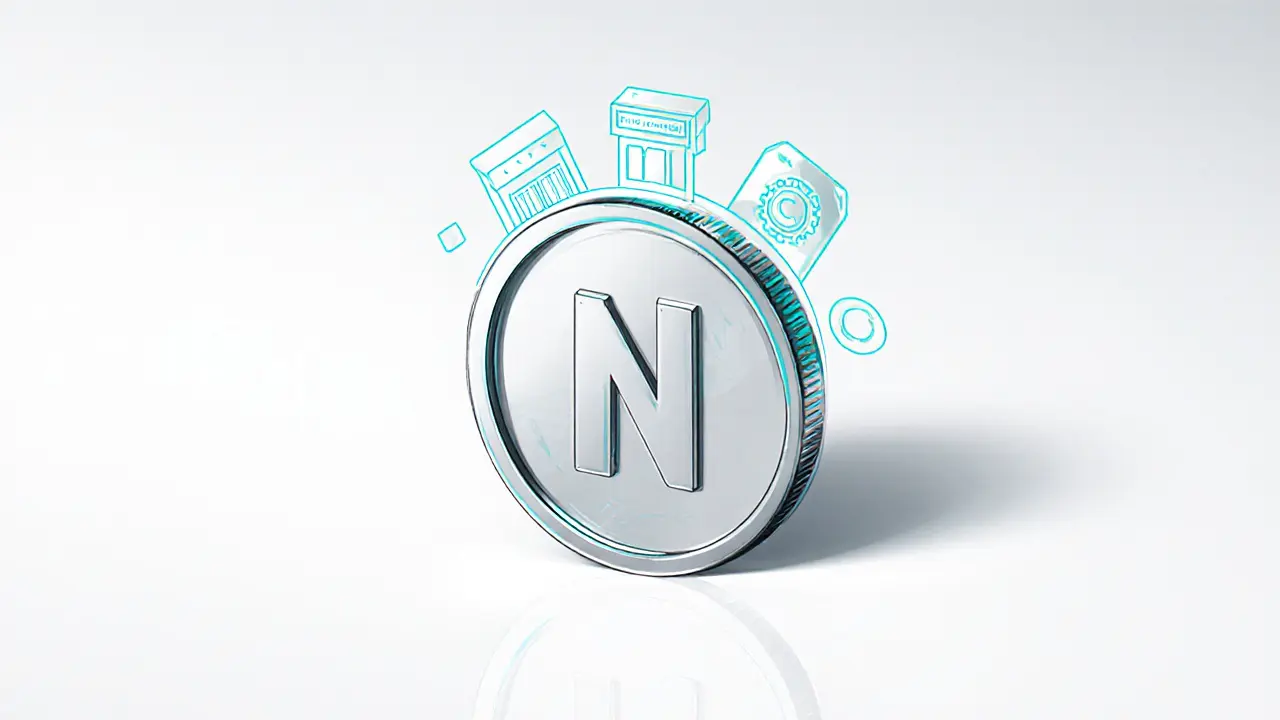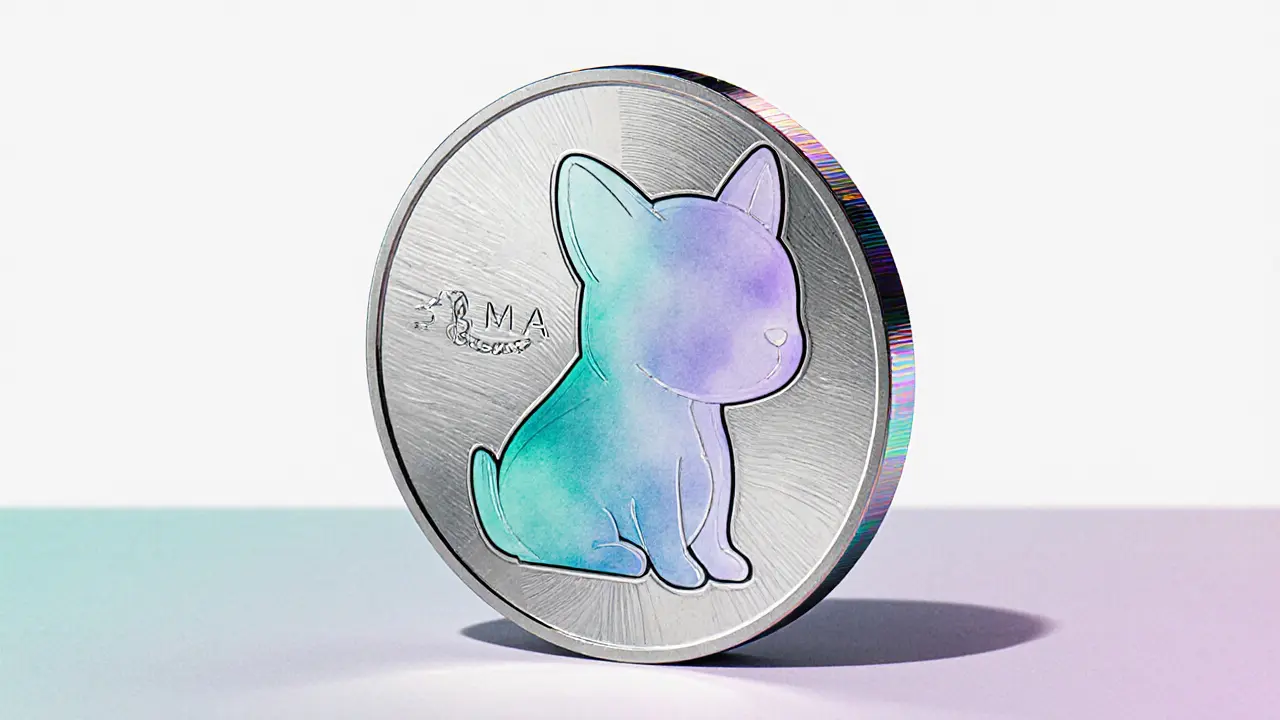BNSx (Ordinals) Explained: Everything You Need to Know About the New Bitcoin NFT Coin

BNSx Token Validator
Enter a transaction ID above to verify the BNSx token details.
When the word BNSx shows up in a crypto forum, most people wonder if it’s just another meme token or something more substantial. The short answer: BNSx is an Ordinals‑based coin that lives directly on the Bitcoin blockchain. It leverages the same inscription mechanics that power Bitcoin NFTs, but it also follows the emerging BRC‑20 token standard. Below you’ll get a clear picture of what BNSx actually is, how it works, how to get it, and what risks you should watch out for.
TL;DR
- BNSx is a Bitcoin‑based token created using the Ordinals protocol and BRC‑20 standard.
- It lives on individual satoshi units that have been inscribed with custom data.
- To hold BNSx you need a Taproot‑enabled wallet with a bc1p address.
- Trading is mainly OTC because Bitcoin lacks native smart‑contract marketplaces.
- Higher transaction fees and blockchain bloat are the biggest practical hurdles.
What Is BNSx?
At its core, BNSx is a token minted on the Bitcoin network using the Ordinals protocol. Ordinals let users attach arbitrary data to a single satoshi-the smallest divisible unit of Bitcoin (0.00000001BTC). When that satoshi is inscribed with a piece of code that follows the BRC‑20 format, it behaves like a token: it has a ticker, a maximum supply, and can be transferred between wallets.
The name BNSx itself doesn’t carry any hidden meaning; it’s simply the project’s chosen ticker. What makes it noteworthy is that it lives on Bitcoin, not on a sidechain or a separate L2. That means every BNSx transaction inherits Bitcoin’s security model and immutable ledger.
How Bitcoin Ordinals Turn Satoshis Into NFTs
The Ordinals protocol was introduced in January2023 by Bitcoin Core developer Casey Rodarmor. Instead of using smart contracts, Ordinals assign a serial number to every satoshi based on the order it was mined. This serial number creates a stable identifier that can be tracked across the entire blockchain.
When a user wants to create an NFT‑like asset, they take a satoshi and inscribe data onto it. The inscription is a special transaction that embeds the data directly into the Bitcoin script, making the information permanently part of the Bitcoin ledger. Because the data lives on‑chain, it never relies on external storage services, which is a key difference from Ethereum‑based NFTs that often store images on IPFS or centralized servers.
Technically, the inscription process requires a wallet that supports Taproot (the latest Bitcoin soft‑fork). Taproot brings the bc1p address format, which is capable of handling the larger scripts needed for inscriptions.
From Ordinals to BRC‑20 Tokens: Where BNSx Fits In
While early Ordinals projects focused on art and collectibles, the community quickly realized they could also encode simple token specifications. The resulting standard, called BRC‑20, borrows naming conventions from Ethereum’s ERC‑20 but strips away the need for smart contracts. A BRC‑20 token definition includes four fields:
- Token type (always
brc-20) - Ticker symbol (e.g., BNSx)
- Maximum supply (the total number of tokens that can ever exist)
- Minting parameters (how new tokens are created, if at all)
When a developer writes these parameters into an inscription, the Bitcoin network treats the resulting satoshi as a token holder. Transferring BNSx simply means moving the inscribed satoshi from one bc1p address to another.
Getting Your Hands on BNSx
Because BNSx doesn’t live on a smart‑contract platform, the usual token‑swap routes (Uniswap, PancakeSwap, etc.) aren’t available. Here’s the typical flow:
- Find a reputable OTC desk or community marketplace. These platforms list BNSx sellers who are willing to send the inscribed satoshis directly to your wallet.
- Set up a Taproot‑compatible wallet. Examples include Electrum (with the latest version), BlueWallet, or hardware wallets that support
bc1paddresses. - Fund your wallet with a small amount of BTC. You’ll need enough Bitcoin to cover the transaction fee, which can be higher than a regular payment because the inscription data makes the transaction larger.
- Receive the BNSx satoshis. The seller will send a transaction that moves the inscribed satoshi to your
bc1paddress. Once confirmed, the token is yours.
After you own BNSx, you can hold it in any wallet that can display the meta‑data of an inscribed satoshi. Some wallets have built‑in explorers that show the token ticker and supply directly in the UI.

Trading, Fees, and Market Realities
Bitcoin’s lack of native smart contracts means there’s no decentralized exchange (DEX) for BNSx. Most trades happen over direct peer‑to‑peer deals, often facilitated by Discord groups or Telegram channels. This OTC model has pros and cons:
- Pros: No need to trust a third‑party contract; transactions are secured by Bitcoin’s proof‑of‑work.
- Cons: Higher friction-buyers and sellers must manually negotiate price, verify wallet addresses, and wait for confirmations.
Transaction fees can be a pain point. Because an inscription adds extra data (sometimes several kilobytes) to the transaction, miners prioritize it only if the fee per byte is high enough. During network congestion, fees for BNSx transfers can spike to 30‑50sat/vbyte, making small‑scale trades expensive.
Another often‑cited issue is blockchain bloat. Every new inscription permanently enlarges the Bitcoin ledger, increasing the storage burden for full nodes. While the impact is still modest compared to the entire blockchain size, it’s a factor that developers keep an eye on when designing future Ordinals projects.
Comparison: BNSx vs Ethereum NFTs vs Solana NFTs
| Feature | BNSx (Bitcoin Ordinals) | Ethereum NFTs (ERC‑721) | Solana NFTs (Metaplex) |
|---|---|---|---|
| Base Chain | Bitcoin (Proof‑of‑Work) | Ethereum (Proof‑of‑Stake/Ethash) | Solana (Proof‑of‑History) |
| Storage Model | Data fully on‑chain (inscription) | Typically off‑chain (IPFS) with on‑chain pointer | Hybrid: on‑chain metadata, off‑chain assets |
| Transaction Fees | Higher for large inscriptions; variable | Gas fees (can be high during congestion) | Low, usually fractions of a cent |
| Native Token Standard | BRC‑20 (token) & Ordinals (NFT) | ERC‑721 / ERC‑1155 | Metaplex Token Metadata |
| Marketplace Ecosystem | OTC, Discord, Telegram | OpenSea, Rarible, LooksRare | Magic Eden, Solanart |
| Security | Inherited from Bitcoin’s 21million‑node network | Depends on smart‑contract audits | Relies on Solana validator set |
Risks and Red Flags to Watch
Before you invest any money in BNSx, consider these practical concerns:
- Fee volatility. Inscription‑heavy transactions can become pricey during peak usage.
- Liquidity scarcity. Because trading is OTC, you may struggle to find a buyer at your desired price.
- Regulatory uncertainty. Bitcoin‑based NFTs sit in a gray area; future regulations could affect how they’re treated.
- Project transparency. The BNSx team’s public information is limited. Always verify the official GitHub or whitepaper if available.
- Node storage impact. As more inscriptions appear, running a full Bitcoin node becomes slightly more resource‑intensive, which could affect network decentralization in the long run.
Doing thorough due diligence-checking the code repository, community reputation, and latest transaction data-will help you avoid scams and unnecessary losses.
How to Verify a BNSx Inscription
Because BNSx lives on a single satoshi, you can confirm its authenticity with a blockchain explorer that supports Ordinals. The steps are straightforward:
- Copy the transaction ID (TXID) that sent the inscribed satoshi to your wallet.
- Visit an Ordinals explorer such as ordinals.com or Gamma.io.
- Paste the TXID; the explorer will display the inscription’s metadata, including the BRC‑20 token fields.
- Check the “ticker” field to ensure it reads BNSx and verify the total supply matches the project’s specifications.
If the explorer shows a different ticker or malformed data, the satoshi is likely not a genuine BNSx token.
Future Outlook for BNSx and the Ordinals Ecosystem
The Ordinals movement is still in its early days. New standards like BRC‑20 have sparked a wave of experimental tokens, and BNSx is one of the more visible examples. Analysts expect three possible trajectories:
- Adoption acceleration. If Bitcoin’s community embraces NFTs and tokens, we could see dedicated marketplaces emerge, reducing OTC friction.
- Technical refinement. Proposals to compress inscription data or batch multiple NFTs could lower fees and curb blockchain bloat.
- Regulatory clamp‑down. Governments may target Bitcoin‑based NFTs as securities, which could restrict trading.
Regardless of the path, understanding the basics-how inscriptions work, why bc1p addresses are mandatory, and what the BRC‑20 token spec entails-will give you a solid footing to navigate upcoming changes.
Frequently Asked Questions
What makes BNSx different from an Ethereum NFT?
BNSx lives on Bitcoin’s base layer via an inscription, so its data is fully on‑chain and inherits Bitcoin’s security. Ethereum NFTs rely on smart contracts and usually store media off‑chain (IPFS), which introduces a different trust model.
Do I need a special wallet to hold BNSx?
Yes. You need a Taproot‑compatible wallet that can generate bc1p addresses. Popular options include the latest Electrum, BlueWallet, and hardware wallets with Taproot support.
How can I check the supply of BNSx?
Look up the inscription on an Ordinals explorer using the transaction ID that sent you the token. The explorer displays the BRC‑20 fields, including maximum supply and current circulating amount.
Are there any exchanges where I can trade BNSx?
Currently, most trades happen OTC through Discord or Telegram groups. A few niche platforms are experimenting with Bitcoin‑based NFT marketplaces, but none have the liquidity of OpenSea or Magic Eden yet.
What risks should I consider before buying BNSx?
High transaction fees during network congestion, limited liquidity, regulatory uncertainty, and the fact that the project’s public documentation is sparse. Always verify the inscription on a trusted explorer and only invest money you can afford to lose.



Peter Schwalm
October 4, 2025 AT 20:23Been holding BNSx since March and honestly, it’s wild how simple it is once you get past the wallet setup. Taproot wallets aren’t as scary as people make them out to be-just update Electrum and you’re good. The real pain is the fees when the mempool’s full, but if you’re patient and wait for a quiet window, you can snag transfers for under 10 sat/vbyte. No need to panic-buy or FOMO into OTC deals.
Alex Horville
October 5, 2025 AT 17:44This whole Ordinals thing is just Bitcoin being hijacked by crypto bros who think they’re building the future but are really just cluttering up a perfect system. Bitcoin was meant to be money, not a digital art gallery. Now every full node has to store garbage inscriptions instead of just transactions. If you’re into this, go use Ethereum. Don’t ruin Bitcoin with your NFT nonsense.
Marianne Sivertsen
October 6, 2025 AT 17:36I find it fascinating how Bitcoin, this quiet, stoic ledger, quietly became the canvas for a whole new kind of digital expression. No flashy smart contracts, no intermediaries-just satoshis carrying meaning like tiny time capsules. BNSx isn’t about speculation for me. It’s about seeing what happens when you let a decentralized network evolve organically. Some see bloat. I see experimentation. And honestly? That’s kind of beautiful.
Shruti rana Rana
October 7, 2025 AT 14:57OMG I just got my first BNSx token last night 🥹💖 and I’m crying happy tears! It’s like holding a piece of Bitcoin history in my wallet 💫 The inscription explorer showed me the exact satoshi with the BRC-20 code-so magical! 🇮🇳✨ Thank you for this guide, it saved me from a scammy Discord group! I shared this with my crypto sisters in Mumbai and now we’re all inscribing our own tokens! 🌸💎 #BitcoinIsArt #BNSxQueen
olufunmi ajibade
October 8, 2025 AT 13:34Y’all are overcomplicating this. You don’t need to be a tech wizard to get BNSx. Just use BlueWallet, send a tiny amount of BTC to cover fees, and copy the TXID into ordinals.com. If the ticker says BNSx and the supply matches what’s listed on the official Discord, you’re golden. I’ve bought 3 different BRC-20 tokens this way-no scams, no drama. The real risk? Not learning this now and missing out when Bitcoin’s next big wave hits. This isn’t a gimmick-it’s the future of asset ownership on the most secure chain ever built. Get educated, not scared.